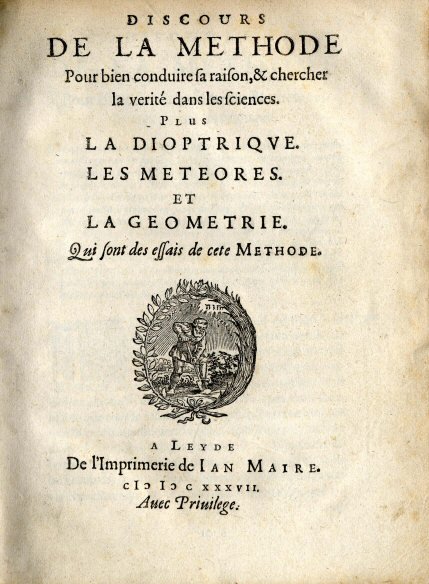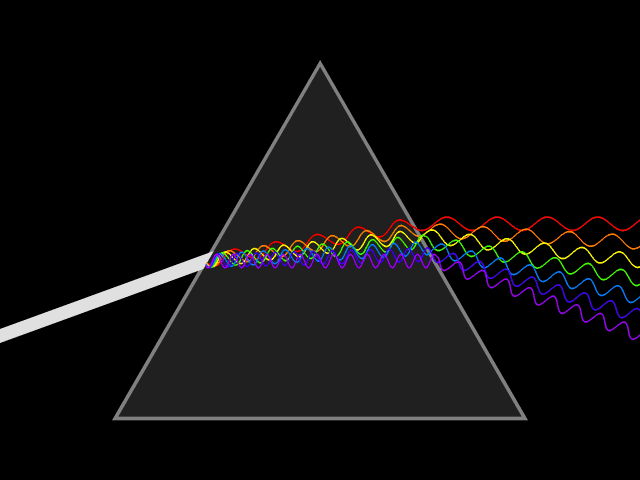René Descartes can easily be considered one of the most influential figures in Western philosophy, and his work is highly distinguished because of the new line of scientific thinking and methodology that it brought about – including “Cartesian skepticism”, which would be a means of arriving at the truth without the influence of the senses or ideas.
René Descartes was born in France in 1596. He learned by following the Jesuit principles in force at the time, and learned Latin, Greek, mathematics and classical philosophy. At first, he considered becoming a lawyer to follow in his father’s footsteps, but at the age of twenty, he left law school to travel. Then, during a short service in the army, he decided that he would devote himself to deconstructing the facts he had learned in order to recreate that knowledge on a more solid foundation.

He brought these thoughts to the first part of the Discourse on the Method, published in 1637: “I have completely given up the study of the humanities and have decided not to seek any other science than what I can find in myself, in the great scholar’s book. In the work, created from some of his dreams, the author presents a model for guiding human thought according to certainty, an intrinsic property of mathematics. So he describes four main rules that, if followed, will always lead him to real conclusions.
Cartesian skepticism and the search for truth
If you’ve ever wondered how opinions and even ambiguities can influence the scientific research being done today, beware that this is exactly what Descartes sought to address. In general, he rejected the idea that everything can be determined simply by logical analysis, without adding it to observations or experiments. So he looked for ways to remove ambiguity, uncertainty, and dependence on authority in the methodology he devised.
The rules presented in the book began with Cartesian skepticism, which is one of the main points of his work: here, the main idea was to embrace skepticism in all things, i.e., never accept anything as true unless it was clearly and definitely possible that it was really true – and here it implies “Everything” even what the physical senses and thoughts indicated. By applying skepticism to everything, Descartes came up with a basic truth: it does exist, and it is something that cannot be doubted. So it can only be true.

The philosopher expressed this thought in the phrase “I think, therefore I am,” which is one of his most famous sayings. He realized that, in fact, the senses can deceive and thoughts too. After all, it is not uncommon for what we think of in dreams to seem as real as what comes to mind when we are awake. Thus, considering that any belief opens the door to any doubt, however small, he endeavored to open the way for the search for truth free from any kind of preconceived notions.
Descartes planned to publish the Discourse on the Method, but he learned of Galileo’s condemnation by the Inquisition for the heresy of defending and spreading Copernican ideas, which placed the Earth and other planets in the orbit of the Sun. He realized that his work could cause similar frictions, and in the end, the book was published more than ten years after his death – and it was even one of the items on the list of works banned by the Pope in 1663. Today, “Discourse on the Curriculum” is one of the most famous And influential works in the history of science, in addition to being considered by some authors as a milestone in the beginning of the scientific revolution.
Cartesian influence on science
Descartes’ contributions are not limited to philosophy alone, but extend to physics as well, as he presented the geometric optics laws of reflection and refraction in a publication. The author explained how the lenses of the human eye, as suggested by the law of refraction, focus the reflected light through the observed object, and then form the image on the retina. In addition, he studied the behavior of light rays and how the shape of lenses can affect the images formed, and disseminated his ideas on how to use knowledge of the patterns and regularities of the sensitive world to create telescopes and lenses that correct defects in light. sight.

This knowledge about patterns can be used not only to explain the observation of objects, but also for scientific exploration, as with studies with telescopes, and to improve people’s lives, as with corrective lenses. Descartes also had his own notions of mechanics, but the problem is that they interfered with his understanding of optics.
In the end, both conceptual “problems” from optics and mechanics had to wait for solutions offered by Isaac Newton, another great scientific name. Today, science is no longer seen as something final and irreparable. Descartes considered the area a great humanistic work, whose search for truth depended on observation and experiments – a view that continues with us today, as well as the concept that the path to truth must be traversed through hypothesis testing and the elimination of what is not true through experiments. These ideas were shared with the philosopher and scientist Francis Bacon.
Finally, it is also worth highlighting the Cartesian legacy that continues with us in mathematics not only as a guide, but also as one of the tools necessary for the work of mathematicians – an example is the Cartesian coordinate system, which is widely used in analytic geometry. Much of this comes from his philosophical work, which outlined Cartesian work in algebra and geometry.
Source: wiredAnd the FoxAnd the IEPAnd the New Yorker
Did you like this article?
Subscribe to your Canaltech email to receive daily updates with the latest news from the world of technology.

“Wannabe internet buff. Future teen idol. Hardcore zombie guru. Gamer. Avid creator. Entrepreneur. Bacon ninja.”

